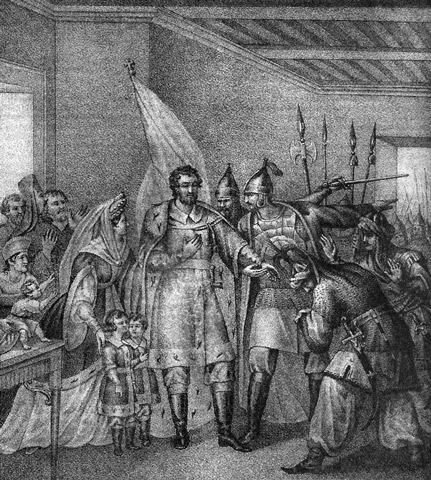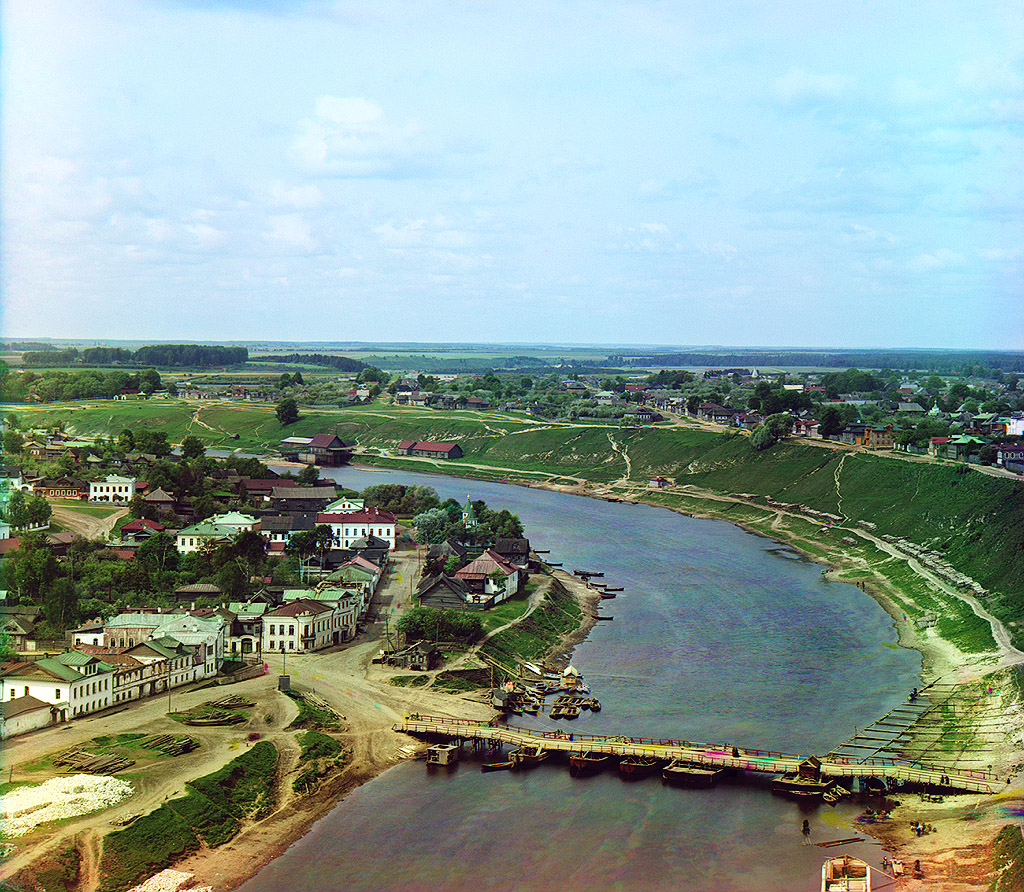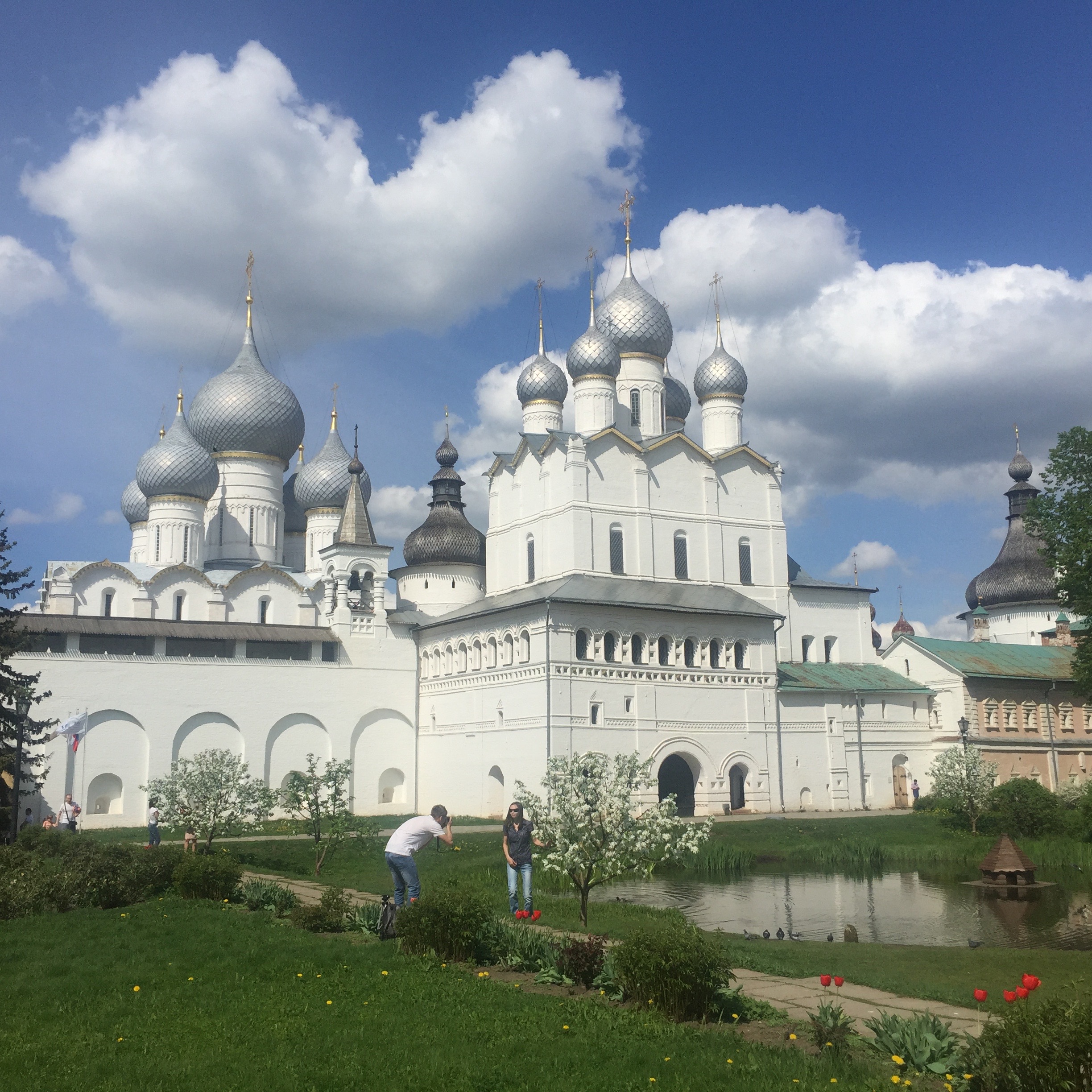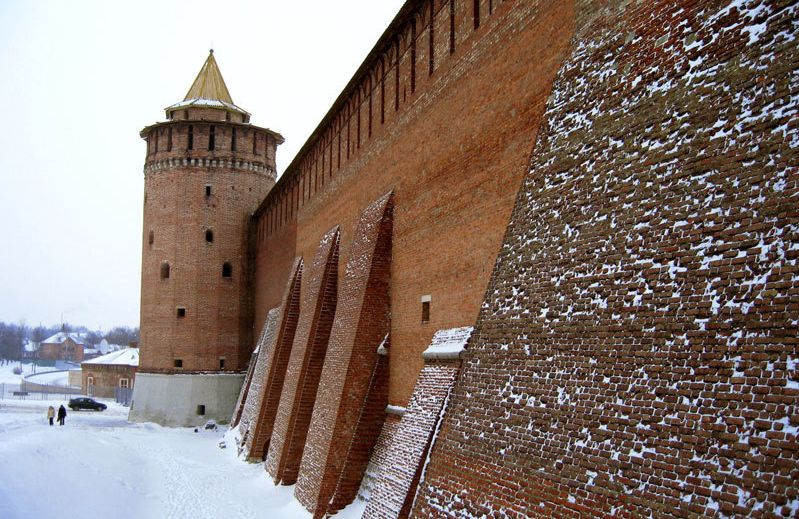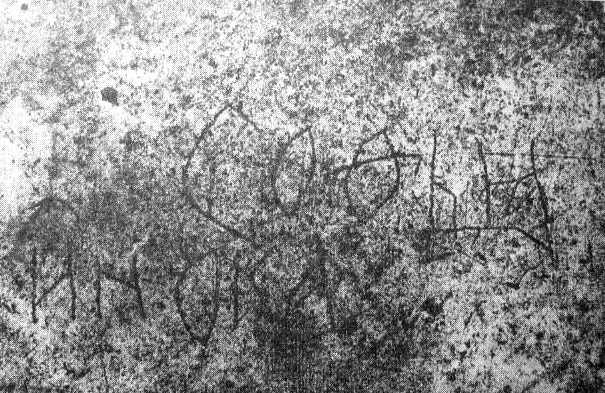|
Muscovite War Of Succession
The Muscovite War of Succession, or Muscovite Civil War, was a war of succession in the Grand Duchy of Moscow (Muscovy) from 1425 to 1453. The two warring parties were Vasily II, the son of the previous Grand Prince of Moscow Vasily I, and on the other hand his uncle, Yury Dmitrievich, the Prince of Zvenigorod, and the sons of Yuri Dmitrievich, Vasily Kosoy and Dmitry Shemyaka. In the intermediate stage, the party of Yury conquered Moscow, but in the end, Vasily II regained his crown. According to Alef (1956), it was "the only struggle for succession in Moscow's history", as well as "the only civil war within the Muscovite principality". He argued that "the death rate in the Moscow family was so high that the dynasty barely maintained itself. When the inheritors to the family patrimony increased sharply at the end of the fourteenth century, an internecine struggle was foreordained. This element helps explain the stability and strength of Moscow in the fourteenth century." Bac ... [...More Info...] [...Related Items...] OR: [Wikipedia] [Google] [Baidu] |
Pavel Chistyakov
Pavel Petrovich Chistyakov (; 5 July 1832 — 11 November 1919) was a Russian painting, Russian painter and art teacher. He is known for historical and Genre art, genre scenes as well as portraits. Biography His father was a freed serf who had worked as an estate manager. Despite the financial burdens, he saw to it that his son had a proper education; first at a parish school in Krasny Kholm, Krasnokholmsky District, Tver Oblast, Krasny Kholm, then the secondary school in Bezhetsk.Brief biography @ Russian Paintings. In 1849, he entered the Imperial Academy of Arts, where he studied with Pyotr Basin and Maxim Vorobiev.Brief biography ... [...More Info...] [...Related Items...] OR: [Wikipedia] [Google] [Baidu] |
Golden Horde
The Golden Horde, self-designated as ''Ulug Ulus'' ( in Turkic) was originally a Mongols, Mongol and later Turkicized khanate established in the 13th century and originating as the northwestern sector of the Mongol Empire. With the division of the Mongol Empire after 1259, it became a functionally separate khanate. It is also known as the Kipchak Khanate or the Ulus of Jochi, and replaced the earlier, less organized Cuman–Kipchak confederation. After the death of Batu Khan (the founder of the Blue Horde) in 1255, his dynasty flourished for a full century, until 1359, though the intrigues of Nogai Khan, Nogai instigated a partial civil war in the late 1290s. The Horde's military power peaked during the reign of Özbeg Khan (1312–1341), who adopted Islam. The territory of the Golden Horde at its peak extended from Siberia and Central Asia to parts of Eastern Europe from the Ural Mountains, Urals to the Danube in the west, and from the Black Sea to the Caspian Sea in the south ... [...More Info...] [...Related Items...] OR: [Wikipedia] [Google] [Baidu] |
Rzhev
Rzhev ( rus, Ржев, p=ˈrʐɛf) is a town in Tver Oblast, Russia, located southwest of Staritsa and from Tver, on the highway and railway connecting Moscow and Riga. It is the uppermost town situated on the Volga River. Population: History Rzhev was founded in the Middle Ages and rivals Toropets as the oldest town in the region. Rzhevians usually point out that their town is mentioned in the Novgorod laws as early as 1019. Their neighbors from Toropets, on the other hand, give more credence to Rzhev's first mention in a major chronicle under 1216, when it was in possession of Mstislav the Bold, Prince of Toropets. Whatever the truth may be, it is clear that medieval Rzhev was bitterly contested by three regional powers—the Novgorod Republic, the Principality of Smolensk, and the Grand Principality of Vladimir-Suzdal. Following the Mongol invasion, Rzhev passed to a lateral branch of the Smolensk dynasty, which made the town its capital. Later the princes divided the t ... [...More Info...] [...Related Items...] OR: [Wikipedia] [Google] [Baidu] |
Nizhny Novgorod
Nizhny Novgorod ( ; rus, links=no, Нижний Новгород, a=Ru-Nizhny Novgorod.ogg, p=ˈnʲiʐnʲɪj ˈnovɡərət, t=Lower Newtown; colloquially shortened to Nizhny) is a city and the administrative centre of Nizhny Novgorod Oblast and the Volga Federal District in Russia. The city is located at the confluence of the Oka (river), Oka and the Volga rivers in Central Russia, with a population of over 1.2 million residents, up to roughly 1.7 million residents in the urban agglomeration. Nizhny Novgorod is the List of cities and towns in Russia by population, sixth-largest city in Russia, the Volga#Biggest cities on the shores of the Volga, second-most populous city on the Volga, as well as the Volga Federal District. The city is located 420 kilometers (260 mi) east of Moscow. It is an important economic, transportation, scientific, educational and cultural centre in Russia and the vast Volga-Vyatka economic region, and the main centre of river tourism in Russia. In the his ... [...More Info...] [...Related Items...] OR: [Wikipedia] [Google] [Baidu] |
Rostov, Yaroslavl Oblast
Rostov Veliky ( rus, Ростов Великий, p=rɐˈstof vʲɪˈlʲikʲɪj, ''Rostov the Great'') is a types of inhabited localities in Russia, town in Yaroslavl Oblast, Russia, one of the oldest in the country and a tourist center of the Golden Ring of Russia, Golden Ring. It is located on the shores of Lake Nero, northeast of Moscow. Population: The name of the town was officially changed to Rostov Veliky in December 2024. The name of the town railway station is Rostov-Yaroslavsky railway station, Rostov Yaroslavsky , due to its location in Yaroslavl Oblast. History Rostov was preceded by Sarskoye Gorodishche, which some scholars interpret as the capital of the Volga Finns, Finnic Merya people, Merya tribe, while others believe it was an important Viking trade enclave and fortress guarding the Volga trade route. It is known from Norse sources as or . Scythians also settled there. These different ethnicities, such as the Vikings, Scyths, Slavs and Finns, were likely th ... [...More Info...] [...Related Items...] OR: [Wikipedia] [Google] [Baidu] |
Kolomna
Kolomna (, ) is a historic types of inhabited localities in Russia, city in Moscow Oblast, Russia, situated at the confluence of the Moskva River, Moskva and Oka Rivers, (by rail) southeast of Moscow. Population: History Mentioned for the first time in 1177, Kolomna was founded in 1140–1160 according to the latest archaeological surveys. Kolomna's name may originate from the Old East Slavic, Old Russian term for "on the bend (in the river)", especially as the old city is located on a sharp bend in the Moskva River, Moscow River. In January 1238, Kolomna was Siege of Kolomna, destroyed by a Mongol invasion of Kievan Rus', Mongol invasion. In 1301, Kolomna became the first town to be incorporated into the Moscow Principality. Like some other ancient Russian cities, it has a Kolomna Kremlin, kremlin, which is a citadel similar to the Moscow Kremlin, more famous one in Moscow and also built of red brick. The stone Kolomna Kremlin was built from 1525–1531 under the Russian Tsar ... [...More Info...] [...Related Items...] OR: [Wikipedia] [Google] [Baidu] |
Yaroslavl
Yaroslavl (; , ) is a city and the administrative center of Yaroslavl Oblast, Russia, located northeast of Moscow. The historic part of the city is a World Heritage Site, and is located at the confluence of the Volga and the Kotorosl rivers. It is part of the Golden Ring, a group of historic cities northeast of Moscow that have played an important role in Russian history. The population of the city at the 2021 census was 577,279. History Reportedly the capital of an independent Principality of Yaroslavl from 1218, it was incorporated into the Grand Duchy of Moscow in 1463. In the 17th century, it was Russia's second-largest city, and for a time (during the Polish occupation of Moscow in 1612), the country's de facto capital. Today, Yaroslavl is an important industrial center (petrochemical plant, tire manufacturing plant, diesel engines plant and many others). It developed at the confluence of major rivers, which were important for transportation and, later, for power. Be ... [...More Info...] [...Related Items...] OR: [Wikipedia] [Google] [Baidu] |
Sophia Of Lithuania
Sophia Vitovtovna of Lithuania (, ; 1371 – 1453) was the grand princess of Moscow as the wife of Vasily I from 1391 to 1425. She was regent for her son Vasily II from 1425 to 1432. Her father was Vytautas, the grand duke of Lithuania. Life She was the daughter of Vytautas the Great of Lithuania and his first wife, Anna. On 21 January 1391, while her father was engaged in the Lithuanian Civil War, she married Vasili I of Moscow. She was the longest serving consort of Russia. After Vasili's death in 1425 she became regent for their ten-year-old son Vasili II. Her father supported Vasili's claim to the throne, which was disputed by his uncle, Yuri of Zvenigorod. Sophia was buried in the Ascension Convent; the sarcophagus was moved in 1929 to the Cathedral of the Archangel by Soviet authorities. Children She and Vasili I had at least nine children, five boys (of which only one survived to mature adulthood) and four girls: * Anna of Moscow (1393 – August 1417), wife of ... [...More Info...] [...Related Items...] OR: [Wikipedia] [Google] [Baidu] |
Dmitrov
Dmitrov () is a types of inhabited localities in Russia, town and the administrative center of Dmitrovsky District, Moscow Oblast, Dmitrovsky District in Moscow Oblast, Russia, located to the north of Moscow on the Yakhroma River and the Moscow Canal. Population: History Dmitrov is one of the oldest urban areas in Moscow Oblast. The town was originally founded by Yury Dolgoruky in 1154, where his son Vsevolod the Big Nest, Vsevolod was born. Its name is explained by the fact that Vsevolod's patron saint was Demetrius of Thessaloniki, St. Demetrius. In the 13th century, the settlement marked a point where the borders of the Grand Duchy of Moscow, Tver, and Pereslavl-Zalessky converged. The settlement itself belonged to the princes of Galich, Russia, Galich-Mersky, located much to the north, until 1364, when it was incorporated into the Grand Duchy of Moscow. Both Dmitry Donskoy and his grandson Vasily II of Moscow, Vasily II granted Dmitrov as an appanage to thei ... [...More Info...] [...Related Items...] OR: [Wikipedia] [Google] [Baidu] |
Galich, Russia
Galich () is a types of inhabited localities in Russia, town in Kostroma Oblast, Russia, located on the southern bank of Lake Galichskoye. As of the Russian Census (2021), 2021 Census, its population was 12,856. History It was first chronicled in 1234 as Grad Mersky (lit. ''the town of the Merya people, Merya''). It gradually developed into one of the greatest salt-mining centers of Eastern Europe, eclipsing the southern town of Halych, from which it takes its name. In the 13th century, Galich was ruled by a younger brother of Alexander Nevsky and remained in his line until 1363, when the Muscovites seized the principality and ousted the ruling family to Novgorod Republic, Novgorod. The 15th and 16th centuries are justly considered the golden age of Galich. At that time it controlled most of the Russian trade in salt and furs. Dmitry Shemyaka and other local princes pressed their claims to the Muscovite crown, and three of them actually took possession of the Moscow Kreml ... [...More Info...] [...Related Items...] OR: [Wikipedia] [Google] [Baidu] |
Photius, Metropolitan Of Moscow
Photius (; died July 2, 1431) was Metropolitan of Kiev and all Rus'. He was of Greek descent. Early life Photius was born in the town of Monemvasia (Despotate of Morea, Byzantine Empire), located on an island near the southeastern tip of the Peloponnese peninsula. He became a monk in his youth. From 1397 he served with Metropolitan Akakios of Monemvasia. Career On 1 September 1408, Patriarch Matthew I of Constantinople consecrated him in Constantinople as Metropolitan of Kiev and All Rus'. He was given the right to rule the whole metropolis excluding the metropolis of Galicia. By that time, only two of the five dioceses remained in Galicia. On 1 September 1409, Photius arrived in Kiev, and by Easter (April 22, 1410) – in Moscow. Northeastern Rus', including the metropolitan region, was devastated by the invasion of Khan Edigu in 1408, resulting in famine and pestilence. Photius found his metropolitan residence ravaged and that the ecclesiastic treasury was empty. Ever ... [...More Info...] [...Related Items...] OR: [Wikipedia] [Google] [Baidu] |
